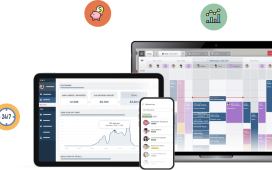You have undoubtedly seen TV commercials from personal injury attorneys promising that you will not pay a dime unless you win. Such promises are made based on the contingency model of payment. The attorneys are promising to take your case on a contingency – that contingency being the assumption that they prevail. It turns out the same model can be applied to debt collection.
We do not hear so much about contingency-based debt collection simply because collection agencies don’t tend to advertise as aggressively as attorneys. Some do not bother advertising at all. Nonetheless, the contingency model is alive and well in collections. It is most often seen in the arena of judgment collection.
-
The Purchase Model
Collection agencies tend to work on one of two models: the contingency model and the purchase model. Let us start by discussing the purchase model. Under a purchase arrangement, a collection agency actually buys debt from its customer. This is legally allowed in the U.S. for the simple fact that debts are considered property.
If you run a company, every debt you are owed by customers is considered a piece of property under the law. It is an asset that can be transferred to another party. This legal status is that which allows debt collectors to buy debts from creditors.
Once a collection agency purchases a debt, it legally owns the debt. Now it can go about collecting according to the rules established by state law. Once sold, the original creditor no longer has any legal right to the debt in question. As a side note, collection agencies rarely pay full value. They generally pay quite a bit less so that they can make decent money on collection.
-
The Contingency Model
Judgment Collectors is a Salt Lake City, UT collection agency that specializes exclusively in judgments. They utilize the contingency model. They explain contingency as an arrangement that allows them to get to work on a case but not get paid for their work until they collect on the debt.
Under the contingency model, the collection agency does not purchase the debt. Ownership remains with the original creditor. Upon collection, a certain percentage of the proceeds goes to the collection agency as payment for services rendered.
There are several advantages of this model for the creditor:
- No More Collection Costs – As soon as the collection agency takes responsibility for the outstanding judgment, the creditor incurs no more collection costs. All further costs are born by the collection agency.
- Higher Returns – As a general rule, the contingency model produces higher returns. It is in the collection agency’s best interests to collect as much as possible, so settling for lesser amounts is frowned upon. This ultimately means the creditor gets more.
The other side of that coin is that there are no guarantees. If a collection agency takes on a judgment and fails to collect prior to expiration, the creditor stands to get nothing. At least with the purchase model, the creditor gets something. So it’s a tradeoff.
-
The Only Difference Is Payment
From the creditor’s perspective, the only difference between the two models is payment. Under the purchase model, the creditor is guaranteed something. Under the contingency model, no payment is guaranteed. Everything else remains the same. Collection agencies use the same types of discovery, they look for the same kinds of assets, etc.
The same contingency model that personal injury attorneys rely on to attract new business can be applied to debt collection. When it is, creditors do not pay a dime for services rendered unless collection is successfully made.







